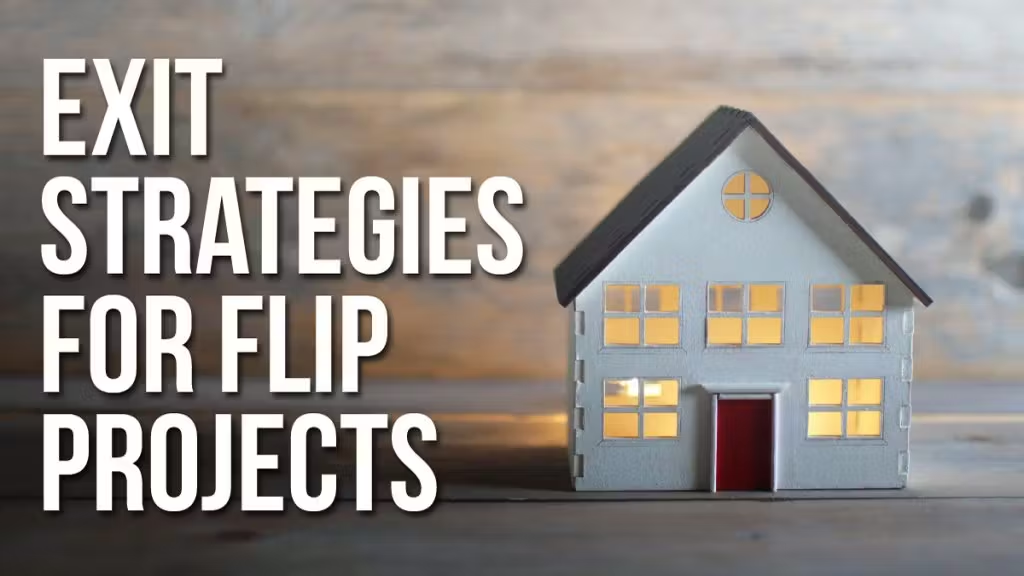
Top 10 Best Exit Strategies For Real Estate
Putting resources into real estate has gained notoriety for creating critical financial momentum. Hardly any resource classes, besides, can grant financial backers with a similar degree of income potential as the lodging area.
It is significant, nonetheless, that even inside the real estate money management industry, there are a few different Exit Strategys — each with its own remarkable pay creating capacities. Accordingly, hopeful financial backers should cautiously consider all the real estate Exit Strategys accessible and pick the ones that best suit their objectives.
In this article, we will investigate the main 10 best Exit Strategys for real estate financial backers to assist them with settling on informed choices and explore the consistently changing business sector scene. In doing as such, we'll make certain to cover every one of the accompanying exhaustively:
What Is A Business Exit Strategy?

A business leave methodology is a foreordained arrangement business people form to decisively sell or move responsibility for organization or resources. It fills in as a guide to explore the most common way of leaving the business, guaranteeing a smooth progress and permitting entrepreneurs to profit by gains or limit expected misfortunes.
A Exit Strategy is vital for any industry since it gives an unmistakable bearing to independent direction and adjusts business objectives to long haul monetary goals. By proactively considering different leave choices, entrepreneurs can defend their ventures, boost returns, and settle on the most ideal choices for their specific advantages, no matter what the business' difficulties and variances.
Top 10 Real Estate Exit Strategies

Turning into a fruitful financial backer includes something other than getting properties; having a strong leave procedure is similarly fundamental. Thus, we've fostered this rundown to investigate the main 10 real estate leave procedures that canny financial backers utilize to enhance benefits and alleviate risk:
Procuring real estate Claimed (REO) Homes
Purchasing and Holding real estate
Executing Lease Choices
Flipping
Passing Resources For Beneficiaries
Prehabbing
Guessing Ashore
Conventional Possession
Utilizing Merchant Supporting
Wholesaling
Honestly, one leave system for financial backers isn't sufficient. For financial backers to make the most of every available open door that comes their direction, they should get familiar with the ten best leave methodologies for real estate financial backers.
Acquiring REO Homes
By obtaining REOs from banks, financial backers can flip homes bought at huge limits and increment their overall revenues. REO properties are homes that banks have gained through dispossession after bombed endeavors to sell at closeout. Since banks are not in that frame of mind of holding non-performing resources, they are frequently roused to sell these properties rapidly, which can introduce a phenomenal chance for wise financial backers.
Because of their criticalness to offload REO properties, banks might sell them for not exactly their genuine market esteem; this permits financial backers to buy properties at a limited cost, expanding the possibilities of a productive flip. By directing exhaustive exploration, haggling successfully with banks, and understanding the neighborhood housing market, financial backers can distinguish underestimated REO properties, redesign them decisively, and execute a fruitful leave procedure by exchanging at a more exorbitant cost.
Buying & Holding Real Estate

Financial backers can utilize the purchase and-hold real estate Exit Strategy to accomplish reliable income through investment properties. The key is to buy homes at a good cost, in a perfect world utilizing the BRRRR procedure (Purchase, Recovery, Lease, Renegotiate, Rehash). With BRRRR, financial backers can get underestimated properties, remodel them to build their worth, and afterward lease them out to occupants for consistent regularly scheduled installments. The timeframe the resource is utilized as an investment property can mean month to month income equipped for making contract installments.
With a money out renegotiate, financial backers can recuperate their underlying speculation and use it to support resulting bargains, constructing a maintainable portfolio that produces long haul income and expected appreciation. The purchase and-hold methodology gives monetary dependability and abundance gathering through recurring sources of income. This methodology requires property the board abilities, or the real estate owner can employ a property director.
Executing Lease Options
Rent choices or lease to-possess systems offer a rewarding way out plan for real estate financial backers, helping purchasers and venders. As the purchaser, financial backers can protect a venture property with a rent choice, giving them the option to buy it at a foreordained cost inside a predetermined period. During the rent term, they can work on their credit or save for an up front installment.
On the opposite side, dealers can produce pay through higher lease installments, a non-refundable choice charge, and expected appreciation in the event that the property's estimation increments. This approach permits financial backers to create income from rental pay while having the chance to benefit from the property's future appreciation.
Flipping
A well known Exit Strategy real estate financial backers incline toward is flipping. Also called rehabbing, flipping houses is a famous real estate leave methodology that includes three primary stages for financial backers to produce benefits. The initial step is purchasing a property underneath market esteem, frequently complying to the Greatest Reasonable Proposition (MAO) utilizing the 70% rule, which considers the property's after-fix esteem (ARV) and fix costs. While it can chip away at business real estate, it's ordinarily held for single-family homes.
Then, financial backers center around rehabbing the property, revamping it to build its worth and appeal to possible purchasers. Ultimately, financial backers sell the property at an upgraded value, planning to benefit essentially from the underlying price tag and remodel costs. Effective flipping requires market information, cautious preparation, and productive execution to boost returns.
Passing Assets To Heirs

Financial backers can get their inheritance and set aside cash for people in the future by carrying out the right domain field-tested strategy for their real estate resources. Setting up a trust, for instance, can be a profoundly viable technique to limit capital increases burdens and guarantee a smooth exchange of abundance to beneficiaries.
Financial backers can stay away from probate, which can be expensive and tedious assuming they move their resources and cash-flow to beneficiaries through the right vehicle. Also, believes offer adaptability in conveying resources, permitting financial backers to assign how and when their main beneficiaries will get the property, shielding it from possible loan bosses, and protecting family abundance for a long time into the future. Legitimate home arranging is urgent for financial backers to shield their resources and is similarly pretty much as significant as the actual speculations.
Prehabbing
The prehabbing real estate leave procedure is a less-involved variety of rehabbing, ideal for financial backers hoping to create easy gains without broad redesign work. In this procedure, financial backers make minor corrective upgrades and fixes to improve the property's allure.
The objective is to make an outwardly engaging property that draws in possible purchasers or occupants without requiring significant redesigns. By limiting the time and costs, financial backers can quickly flip the property for a beneficial leave, making it an appealing choice for those looking for a more direct and quicker real estate venture approach.
Speculating On real estate
Putting resources into crude real estate offers financial backers remarkable flexibility and potential for benefits. Not at all like created properties, empty real estate gives a fresh start, permitting financial backers to pick between different leave procedures.
One choice is to hold the real estate for future turn of events, exploiting the region's development and expanding its worth over the long run. On the other hand, financial backers can flip the crude real estate rapidly, offering it for a benefit to engineers or purchasers looking for a particular area.
This adaptability in potential purposes permits financial backers to adjust their system in light of economic situations, making crude real estate a rewarding and flexible expansion to their real estate portfolio.
Traditional Ownership
Possessing and residing in a home can be a compelling speculation methodology for people. Mortgage holders can make redesigns and upgrades by dwelling in the property, possibly expanding its worth over the long haul. They can later decide to sell the home for a benefit, exploiting the appreciation acquired through the upgrades made.
While appreciation isn't ensured, verifiable information shows that real estate will in general increase in value over the long haul; this makes homeownership a moderately protected venture, and regardless of whether the property isn't sold, mortgage holders can in any case profit from the value they work throughout the long term.


